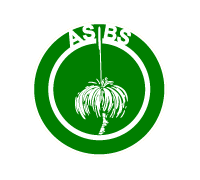
ASBS Newsletter – Book Review
Freshwater Algae in Australia.
A guide to conspicuous genera.
written by T.J. Entwisle, J.A. Sonneman and S.H. Lewis
(From ASBS Newsletter Number 92, September 1997)
Publisher & orders: Sainty & Associates Pty Ltd, PO Box 1219, Potts Point, NSW 2011, Australia [Fax (02) 93315372; international: 61-2-9331 5372. Email geoff@saintycom.au. ISBN 0 646 31408 4.
Specifications: 204 mm x 128 mm, 242 pp., c. 300 colour photographs plus free-hand illustrations.
Retail price (Australian dollars, including postage & packaging within Australia): hardcover $49.95, soft cover $36.95.
This is an excellent work and will be invaluable to anyone - amateur, student or professional biologist - requiring a guide to the genera of freshwater algae that occur in Australia. Of the 400 or so genera of freshwater algae that occur in Australia 96 are covered - all genera of macroalgae and the most common genera of microalgae likely to be encountered.
The book commences with some introductory notes on the following: using the book; the divisions of algae encountered in Australia; algal habitats; collection, preservation and storage of algae; microscopy; algal blooms; algal weeds; rare and threatened algae.
Pages 20-29 are devoted to a pictorial key which initially sorts taxa into ten different groups and three genera on the basis of easily seen characteristics, e.g. non-motile unicells, motile unicells, unbranched filaments, whorls of small branches. Each group is then treated separately, and the clear drawings of diagnostic features of each genus should normally enable ready identification.
The broad groupings recognised in the initial key are colour-coded and these same groups and codings are used in the main text; the codings occur on the outer margins of the photograph page and are readily visible when flicking through the book. This means that the more detailed key can be easily skipped over, the user examining the mostly excellent photographs that adorn this work to identify a member of any one group. It is very much a well-presented, 'user-friendly' book.
The main text for each genus is spread over two pages, the left-hand page being devoted to notes on habitat, colour, habit, microscopic features, classification, species and distribution, notes and similar taxa. The right-hand page is devoted mostly to colour photographs of the subject, line drawings being used if photographs were unavailable.
Pages 222-225 are devoted to a glossary and pp. 226-236 to references for anyone wishing to pursue further information on a genus and its component taxa.
One aspect of the book that should be mentioned is the fact that many of the genera are cosmopolitan in distribution. Therefore this work has application outside of Australia. Indeed, both Australian and non-Australian lecturers running courses in limnology should find this book invaluable.
The three authors, and Enid Mayfield who was responsible for the freehand drawings, are to be congratulated for producing such a fine guide.
Reviewer: Philip Short